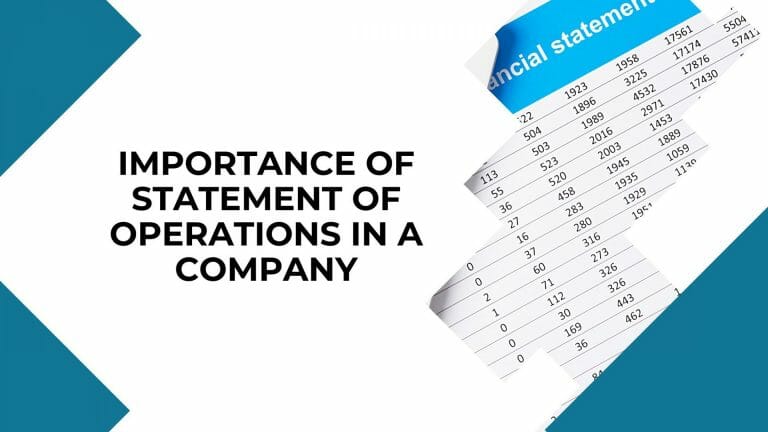There are a multitude of reasons that a business would need a financial overview. These reasons can vary from courting new investors for a fresh infusion of capital to figuring out why net income was lower this quarter than it was the previous quarter. When assessing the financial health of a company, the typical first move in that assessment is to review the statement of operations. To use an American football analogy, the statement of operations is akin to a head coach reviewing game tape with his squad.
The coach looks for mistakes made such as missed assignments, wrong play formations, and blown tackles. The team reviews these mistakes and makes a mental note to not make them again in the next game. Statement of Operations gives you the “game tape” of the quarter’s financial benchmarks. You can review where certain departments (Cost of Goods, etc.) may have spent too much or perhaps, too little in the quarter. We will cover what entails the statement of operations in detail below.
What Is A Statement Of Operations?
The Statement of Operations is simply the declaration of a company’s profit and loss for the financial quarter. Another popular term for this document is a P&L sheet or statement which stands for a profit and loss statement. In its simplest form, a statement of operations shows revenue minus expenses to disclose whether a company has shown a net profit or a net loss in the quarter. Take note, that is the “simplest form” to get to that conclusion as with practically all businesses and corporations no matter the size, financial dealings are never in their “simplest form”.
There are taxes and interest to consider as well as the depreciation of items and goods and other expenditures to factor into the financial mix. You also have to consider the market that the business or corporation is in. Is the market seasonal? Are certain quarters susceptible to net losses? Are there other underlying factors that the business or corporation is dealing with such as a takeover or a restructuring? Sometimes, the best information to glean about a company won’t be found “in print”. We will next discuss the importance of statements of operations and how it can help both businesses and potential investors.
Why Is A Statement Of Operations Important?
The importance of a statement of operation can’t be overlooked when assessing a company’s current worth. The very basis upon which a company is judged is by the bottom line and that is how profitable a company is. Any company can shout from the rooftops about having a record quarter of revenue earnings without context, but it’s quite another to back up that statement with documentation of related increases in profits.
There are many scenarios where a company could explain the record amount of revenues earned. Perhaps the company spent twice the normal amount in marketing to get the word out to increase sales. The company could also have spent more money in hiring, training, and employing more staff which dovetails neatly with the increase in marketing. The main point is that in many cases, these extra expenditures will mitigate any increase in revenues, and the end result is a similar amount or a nominal increase in net profit for the quarter. The statement of operation looks at all of the pertinent data and explains exactly how the net profit or loss was derived.
How Do Operating Statements Work?
Operating Statements work by compiling the numbers and deducing whether the business has shown a net profit or loss for the period. This period varies between companies, some companies like to have a monthly statement of operation sheet while others elect to do this every quarter (three months). We will cover the three main components (revenue, expenses, and tax) of a statement of operations in detail below.
Revenues
Revenues are in basic terms what a business brings in through sales during the period. This is the main source of income for the business and all statements of operations always start with this figure. This figure is not the gross figure as you also need to factor in COGS or Cost Of Goods Sold. COGS is the amount that the goods cost to make or produce. You have to factor in many variables into reaching this monetary figure, variables such as: raw materials, labor costs, utility costs, production costs, and other components. You subtract the Cost Of Goods Sold from the Revenue figure to reach the final goal of the revenue section, Gross Profit.
Expenses
The old adage “It Takes Money To Make Money” is what this section is all about. Expenditures are a necessary evil in the day-to-day running of modern business. Think of how many avenues there are for a business to spend money in, there are quite a few to think about! You have marketing, administrative, and day-to-day expenses to consider. You also have to factor in depreciation of assets and loan interest as well. All of these expenditures are tabulated and the Total Expenses figure is reached at the end of this section.
Tax
Taxes are also a necessity for not only individuals but business owners as well. We all have to pay our fair share in taxes and to tie this in with the first section we discussed a little earlier, taxes are the main source of revenue for municipalities, both local and state. Taxes must be paid during each quarter and this figure is also included in the statement of operations sheet.
The flow of operations goes as follows: You subtract the total expenses from the gross profit to derive the EBT or Earnings Before Tax. The tax amount is then subtracted from the EBT to get the final number. If this number is a positive number, the business has realized a net profit. If this number is a negative number, then the business has realized a net loss.
An Assessment Of A Company’s Financial Health
The viability of a company to be able to stay in business and pay their employees and vendors is based in the short-term on the statement of operations sheet. One facet that hasn’t been talked about yet here is shareholders and the importance of the statement of operations sheet is to them. You’ve seen the term EPS used in some stock market reporting in the past, this EPS acronym stands for Earnings Per Share and whether a company shows a net profit or loss has a huge impact upon the EPS figure.
Read more :How to Determine Financial Health of a Company
Small Fictitious Example:
PepsiCo Inc. released its statement of operations for 3Q 2021 in December and the document shows that the company realized a net profit of $30 million dollars. PepsiCo Inc. has 30 million shareholders who hold stock in the company, so the net profit is divided by the number of shareholders to reach the final EPS figure of $1.00 a share.
Final Thoughts
Utilizing a statement of operations is a required process and a useful tool in the financial accounting toolbox. This document can show an accurate financial snapshot of where the business currently is and if any adjustments need to be made to strengthen the company’s financial position for the next quarter.



